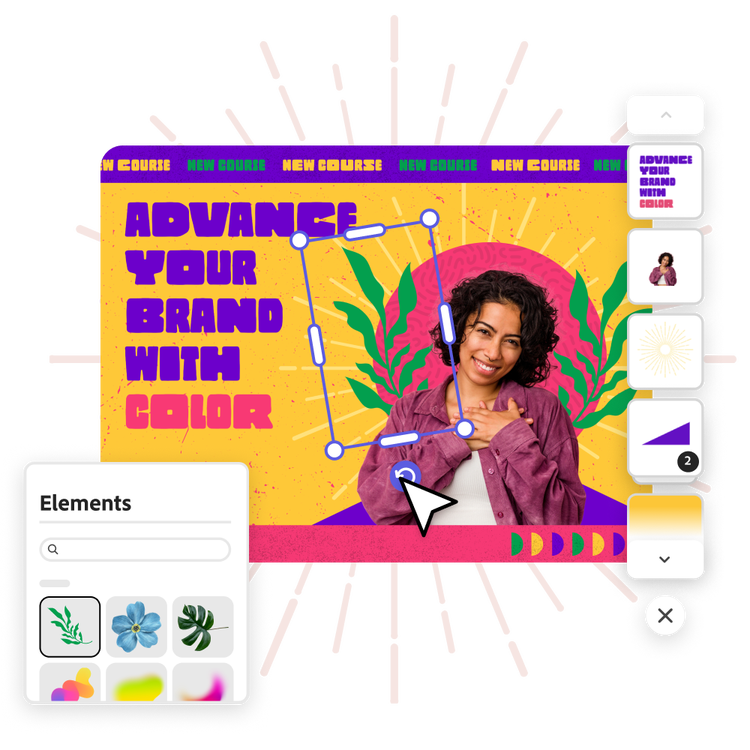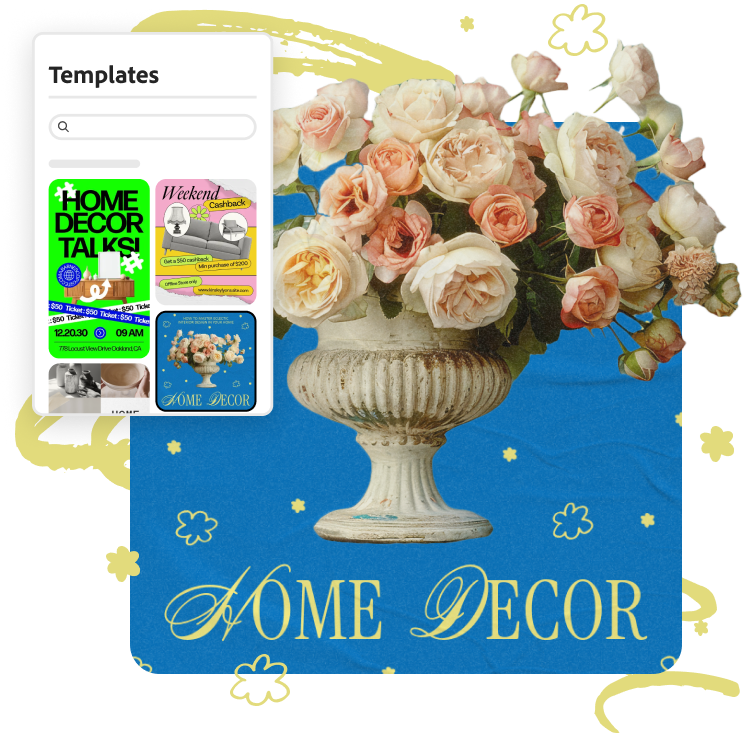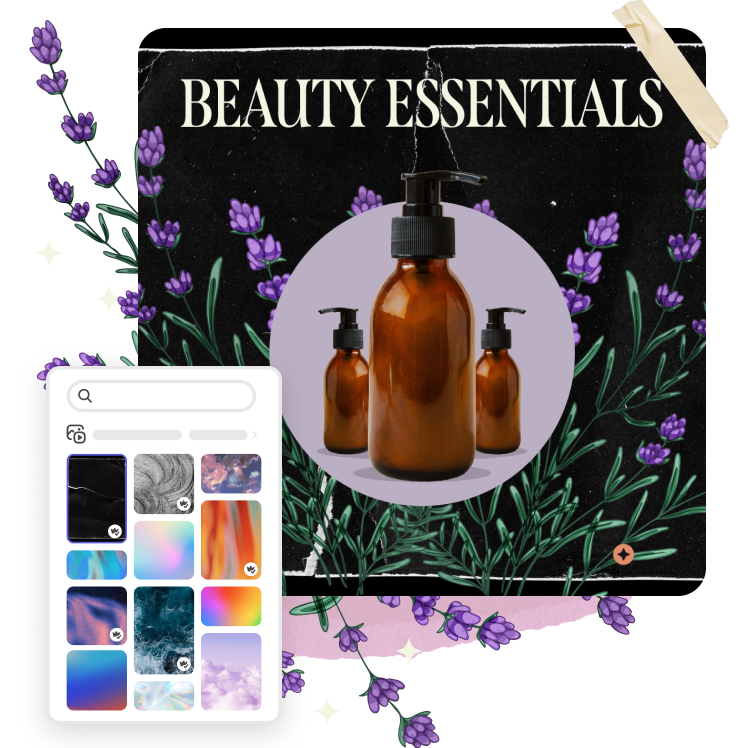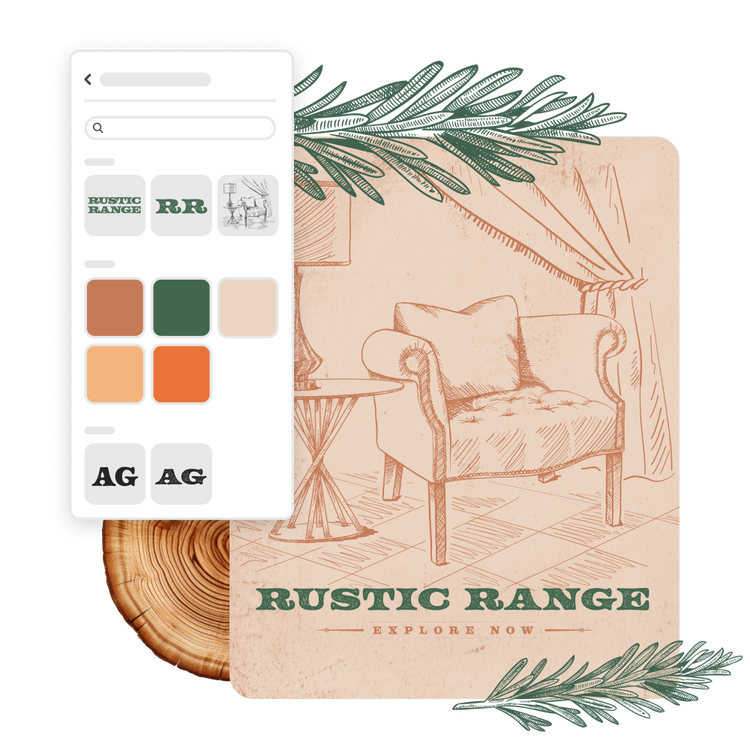How to start a blog with the help of Adobe Express.
Starting a new blog is an exciting way to tell your stories and share your passions. It also allows you to build your online presence and engage with individuals who have similar interests. While starting a blog seems daunting, Adobe Express gives you a faster and better way to create a blog with beginner-friendly blog tools for making eye-catching blog page designs and content. This guide will show you how to create a blog with the help of Adobe Express.
Pick a template to customize.
Use professionally designed templates to make an awe-inspiring blog design in minutes; no experience is required.
Beginner-friendly blog tools to start a standout blog.
Easy-to-use blog tools for all your blog design needs.
Whether you’re creating a blog for business or personal use, Adobe Express gives you access to beginner-friendly editing tools. Use these to make showstopping creative projects. Whether it’s a striking logo or a thoughtful card, it’s now easier than ever to make design assets that help your blog stand out.
Create now
Personalize your blog like never before.
Let your unique personality shine through your blog with Adobe Express. When it comes to making one-of-a-kind design assets, you can use templates or start from scratch. Once you’re happy with the results, download and add them to your blog.
Discover endless customization options
Your blog page design made even better.
Every little detail of your blog page design matters. Make each one count with the help of Adobe Express, whether it’s a beautiful background or a funny meme.
Explore all Adobe Express blog tools
Take full control of your blog.
Adobe Express puts you in the driver’s seat when it comes to creating your blog. Go for something glittery or fabulous. Opt for a muted palette and minimalist designs. There’s no limit to what you can do with your creative projects. And when you need to promote your blog, Adobe Express gives you the tools you need to get started right away. From polished business cards to invitations, the blog tools from Adobe Express make it easy to spread the word about your new blog.
Take your blog to greater heights with Adobe Express
How to start a blog for free.
If you’ve always wanted to learn how to start a blog, then you’ve come to the right place.
The thing is, creating a blog isn’t always as easy as others make it to be. There are several ways to get started and multiple factors to consider when creating posts. There’s also the design aspect of creating a blog from scratch. Starting a new blog now starts to feel overwhelming.
This guide will walk you through how to create a blog for free. We’ll start with the basics and then cover how you can grow your new blog with the help of Adobe Express.
Lay the groundwork for a blog that leaves a lasting impact.
- Start by setting your goals. Why do you want to start a blog? There are many reasons why you would want to launch a blog. Perhaps you want to take up a new hobby, share stories only you could tell, or build your brand. What do you want to achieve with it? Are you looking to generate additional income? Promote your business? Build an online presence?
- Identify your niche. What do you want to blog about? Choose a topic you’re knowledgeable or passionate about. Consider your target audience, their pain points, and how your blog can bring value to them. If you’re catering to people in their 30s and 40s who want to travel, then the content you’ll be making will be vastly different from blog posts aimed at 20-year-olds who want financial advice. Your niche also determines whether or not you can create content consistently.
- Research competitors. Analyze similar blogs in your niche. Doing so helps you see what works or what doesn’t and identify content or topic gaps you can fill.
- Look for inspiration. Don’t know where to start? Check out your favorite bloggers to see how they structure their blogs or how they’re diversifying content. Try to recreate their strategies, but don’t fall into the trap of copying their blogs.
Now that we’ve covered the key considerations before starting a blog, let’s dive into how to start one for free.
1. Choose the best blogging platform for your needs.
The good news is that there are several free blogging platforms like Drupal, WordPress.org, and Medium. Which one you choose will depend on factors like:
- The level of customization the platform offers
- How easy it is to use
- The features each platform has
- If the platform comes with additional fees or hidden costs
While many platforms let you create a blog for free, they also offer paid plans if you want to upgrade or unlock advanced features as your blog grows. Note that some free platforms may not come with custom domains. Some may even require you to shoulder extra costs for website hosting.
Adobe Express lets you create amazing web pages for free in just a few clicks. No more fiddling with traditional websites to convey your message and tell your stories. This is a great option if you have a creative project that doesn’t need more than one page, like a blog post. Best of all, you can make it your own by adding custom images or videos. When you’ve completed your webpage, you get a unique URL you can share online.
2. To host or not to host?
Decide if you want to self-host or use a hosting platform. The former will require you to manage your own server to host your data. This is ideal if you want to have more control over your data. If you want to simplify things, use a web hosting service instead. Some platforms have built-in hosting. If you choose one that doesn’t include hosting, it’s best to go for an option that has good bandwidth, reliable uptime, and excellent customer support.
3. Come up with a memorable blog name and domain.
When it comes to creating your blog name, you can let your imagination run wild. Use puns or your name. If you’re running a business, use your business name. You can also come up with a blog name that references your niche. Once done, pick a domain name. This serves as your blog’s address on the web, such as www.yourblogname.com.
4. Set up and customize your blog.
Once you’ve done all the prep work, here comes the exciting part—setting up and making your blog your own. How you set up your blog will depend on the blogging platform or web hosting service you use. Some have a drag-and-drop interface, while others let you use customizable templates or themes. Figure out which design elements you want to include in your blog to make it unforgettable.
5. Write your first post.
This is your chance to make a lasting, positive impression. How do you get started writing a high-quality blog post that people will want to read? There’s no right or wrong answer, but here are some tips to help you get started:
- Perform keyword research to know what topics people are searching for.
- Make sure that your title is catchy, relevant, and appeals to your audience’s interests.
- Optimize your post for SEO by adding relevant keywords and internal links.
- Pay attention to the metadata, including your blog post’s meta title and meta description.
6. Start promoting your blog.
Marketing your blog is vital if you want it to grow. There are several ways to promote your blog:
- Use social media to expand your reach.
- Nurture audience loyalty by creating a dedicated newsletter.
- Branch out to different content formats like YouTube videos or podcasts.
Tips and recommendations to help you create a more dynamic blog.
To make your blog stand out, include branding elements. Design your blog your way with Adobe Express. Create unique images from text with the free AI image generator. Use Adobe Express to make on-brand logos, banners, and photo collages.
Liven up your blog by adding engaging photo and video content. Adobe Express is packed with features to help you create captivating content. Edit videos or your blog background images in a snap by adding animation, music, and icons. Easily rotate, resize, or combine photos to make them more arresting. If you need help converting videos to MP4, Adobe Express has got you covered.
Aside from the branding and design elements, pay attention to your writing. Come up with catchy headlines. Properly format your blog by:
- Using bullet points or numbered lists to break up text.
- Writing in shorter sentences that are easy to read and understand.
- Adding relevant images to separate sections.
Also include compelling CTAs to encourage readers to take action. To spice things up, why not ask an expert to write a guest post for your blog? Or, instead of doing a full blog post, consider making an infographic to highlight key points. This is a great option if you’re dealing with lots of data on your blog post.
The work doesn’t stop after you’ve hit the publish button. You still need to track your blog’s performance. Monitor metrics like views, number of visitors, and clicks. Some blogging platforms offer a built-in analytics dashboard to make tracking easier. If you want to do a deeper dive, use Google Analytics to track traffic and audience demographics.
Using a content calendar also helps you stay on track so you can consistently publish content. You can use the calendar to plan your posting schedule for the whole month.
Make scroll-stopping blog page content and grow your new blog with Adobe Express.
Use the design and editing tools from Adobe Express for free to create brilliant YouTube thumbnails, attention-grabbing announcements, and posters.
Want to promote your new blog on social media? Create scroll-stopping posts for Instagram, Facebook, and TikTok. Share them online with a custom QR code. Like something more old-fashioned? Use Adobe Express to design breathtaking flyers to spread the word about your new blog.
If you’re hosting webinars on your blog, Adobe Express lets you quickly and easily make professional-looking certificates. Make standout graphics by adding text to your photos for free.
Whether you’re creating blog page content or looking for ways to market your blog, Adobe Express has everything you need to make stunning blog designs and then some.







